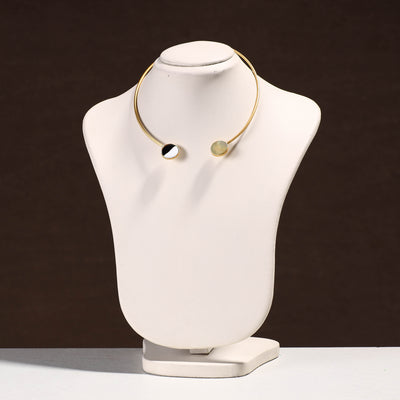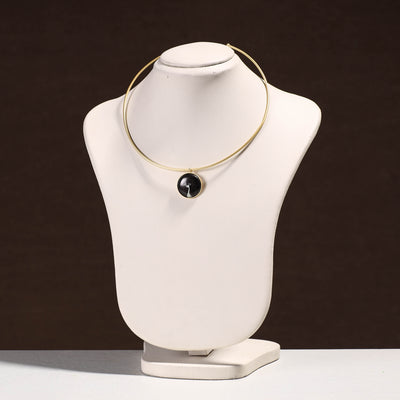Meenakari is a metal surface coloring and ornamentation art form. Mina, a feminine version of "Minoo," symbolizes Heaven in Persian. Coloring began as a Persian art form and was extensively adopted by Greeks, Chinese, Russians, and others. However, each of them had their personalizations of the art form.
ORIGIN OF MEENAKARI
Raja Man Singh of Amber discovered the technique and sent Persian artisans from Lahore to Rajasthan in the 16th century, giving the art a distinct Indian flavor and appeal. The skill thrived under Mughal patronage. The strong connection between Mugal and Rajputs resulted in Meenakari's golden period. Soon Jaipur became the Meenakari centre over time and had its own peculiar Champlevé enamelling technique, marked by its deep red color.
MAKING OF MEENAKARI
Meenakari artisans are known as Meenakars, and their skills are generational, brought down through the family. This lovely art takes a lot of time and talent to make. The Meenakari technique consists mostly of coating a metal piece with colored enamels. The most common metals used have been gold, copper, and silver. However, a new metal known as White metal is now in use. It is significantly less expensive. Green, red and white enamels are the most predominantly used colors on the metal. The first design is created by a designer and goldsmith. The base is later painted white/pink. Following that, different colors are applied based on their hardness. The jewelry piece is then burned an equal number of times as the number of colors utilized. Firing takes place in an electric kiln or on the coils of a local heater with the use of a thin iron mesh. This permanently seals the color to the metal. After all of the colors have been filled in and fired, the piece is cleaned with a filter to highlight the pattern's metal framework. This is then rubbed and cleaned with a mix of tamarind and lime to bring out the lustre. Precious stones such as diamonds, rubies, and emeralds can be added to the jewelry.
FixedMeenakari is known as a colorful craft because of the various vibrant colors used, which makes it stand out. These colors are derived from different metals. For example, yellow is obtained from potassium chromates, violet from magnesium carbonate, green from copper oxide, blue from cobalt oxide, brown from red oxide, and black from manganese, iron, and cobalt. The most difficult color to obtain is vivid red. Enamel colors are sourced and shipped from Amritsar, Punjab, as well as Germany, and France.
TYPES OF MEENAKARI ART
There are several Meenakari items available in the market. Rings, anklets, bangles, necklaces, earrings, scarves, dupattas, photo frames, jewelry boxes, and key chains, are among the many unique goods available.
Meenakari jewelry is classified into two styles: the "Ek Rang Khula" style, which involves a single color of enamel for the complete design of the jewelry, and the "Panchrangi Meena" style, which incorporates five colors to create one set of Meenakari jewelry. This precious colorful jewelry can be maintained by cleaning it with lemon and tamarind.
The Meenakari Bridal Chura looks luxurious and majestic. All the Dulhan prefer the Gulabi Meenakari which has a pink enamel that is extracted from the rose. A bridal Meenakari jewelry set is the best investment as it can never go out of fashion and is regarded as the pinnacle of India's traditional wedding jewelry style.
MAINTAINING MEENAKARI CRAFT
Meenakari designs are inspired by Mughal architecture and nature. It is mainly composed of floral patterns, leaves, blossoms, figures of Gods and Goddesses, peacocks, geometric patterns, etc. This craftwork is trendy and used a lot in home decor items as well. The more detailed the design, the more expensive the Meenakari item. Always keep an eye out for Meenakari's more refined and clean look before selecting the item. Meenakari articles are long-lasting and usually stand the test of time. They may be used on a regular basis, but they must be maintained in order to last longer. Meena loses its luster over time, thus gold and silver articles should be cleaned with a dry cloth and kept in cotton covers.
MODERN DAY PRACTICE
Meenakari is still practiced in many parts of India, and each region/state has its distinct style. In Banaras, for example, rose pink (Gulabi Meena) is the most popular color, but Meenakars in Lucknow prefer blue and green Meenakari over silver. In Delhi, Banaras, and Jaipur, gold enamelling is done, whilst silver enameling is done in Bikaner, Jaipur, and Nathdwara. Pratapgarh, on the other hand, produces glass Meenakari.
Do check out these beautiful handcrafted Meenakari products on iTokri!
Blogs you might also like:
Indian Dupattas Of The Late 1990s That Are Still Popular
Stunning “Phad” Art from Rajasthan
Sarasa—The Gujarati kalamkari cloth that became a rage in Japan
 Verified Purchase
Verified Purchase
































Leave a comment (all fields required)